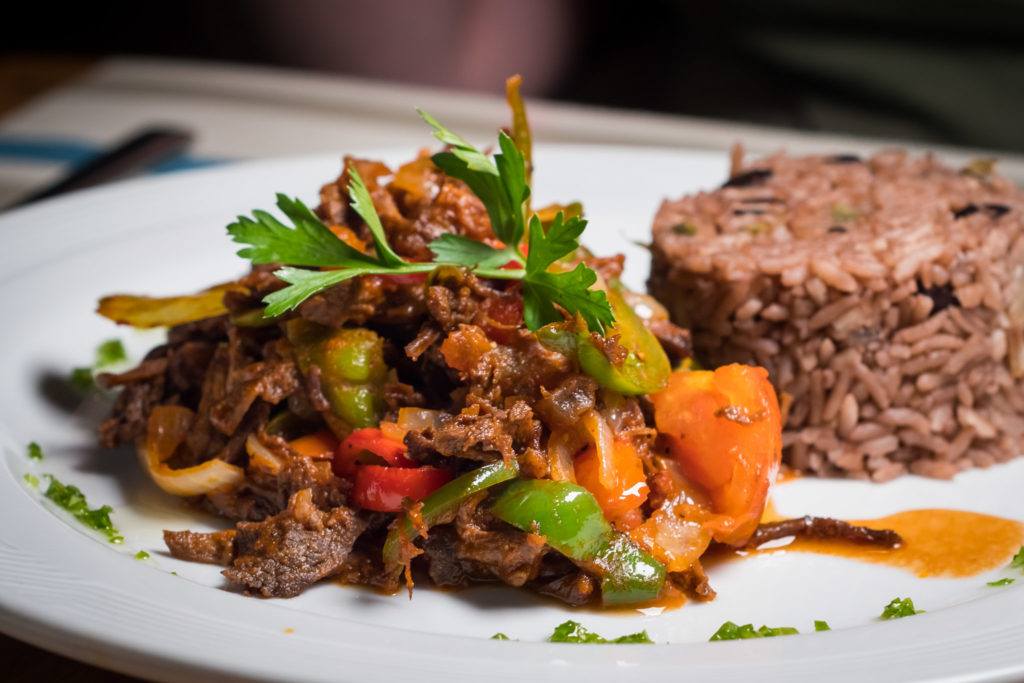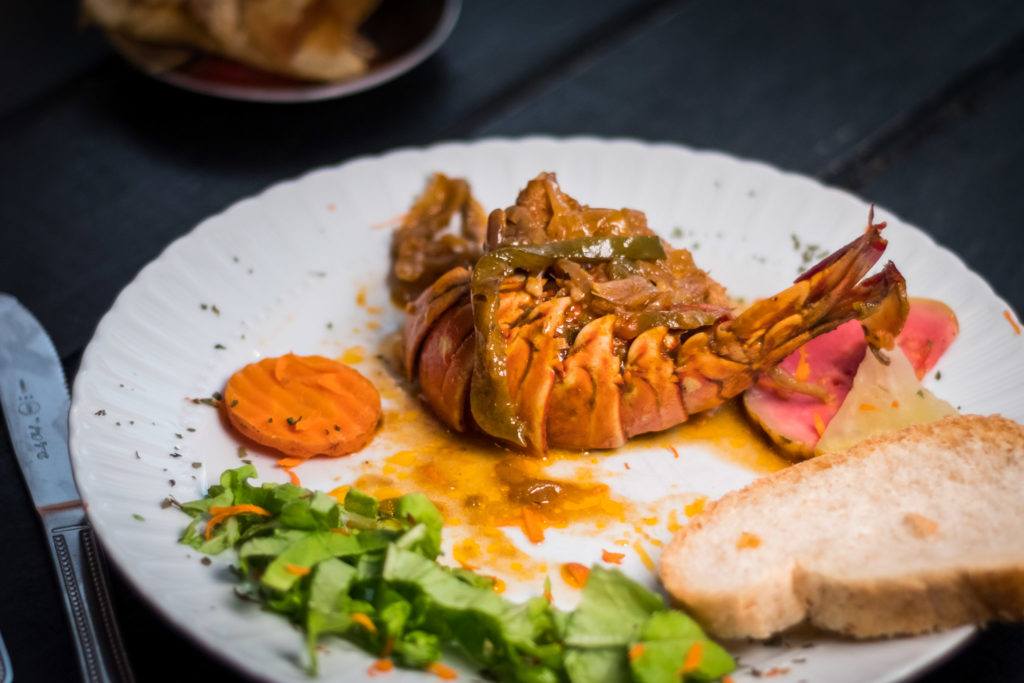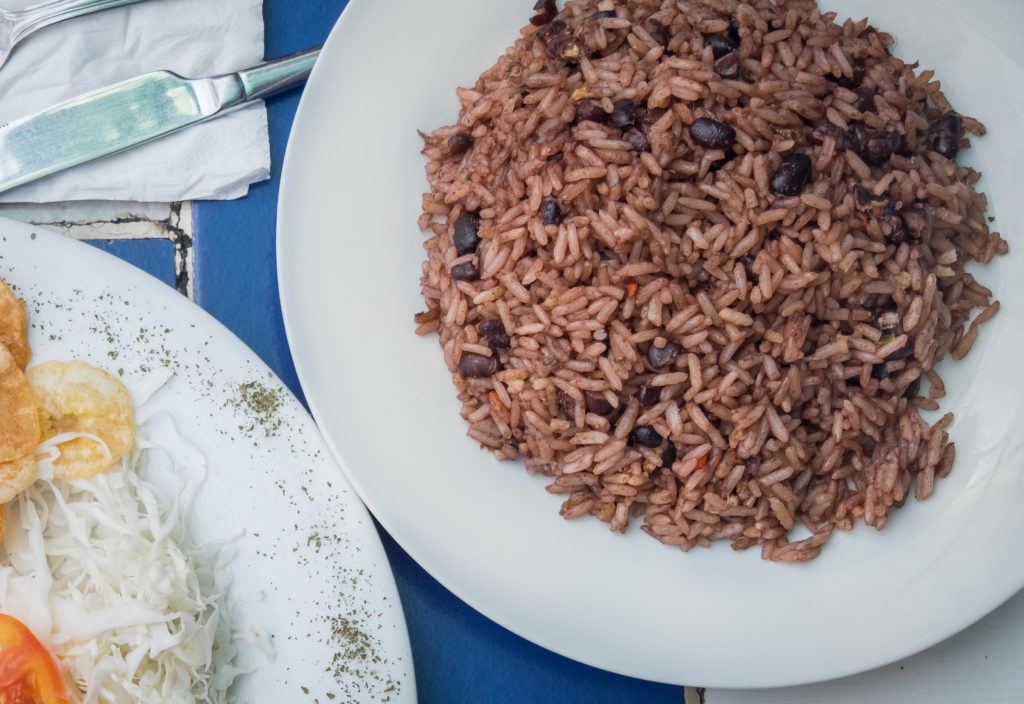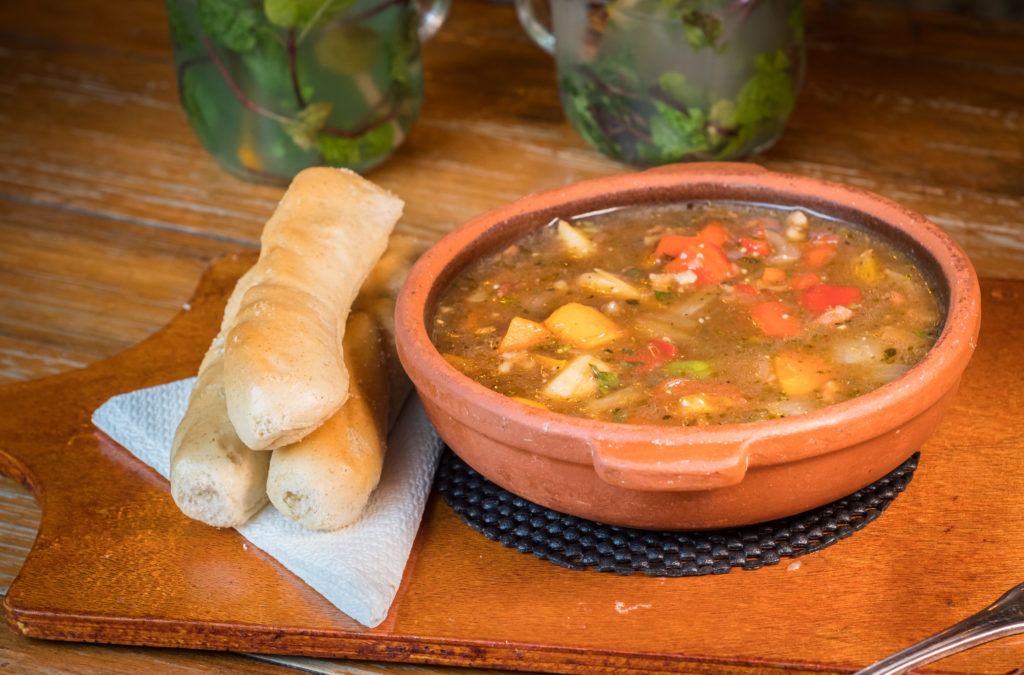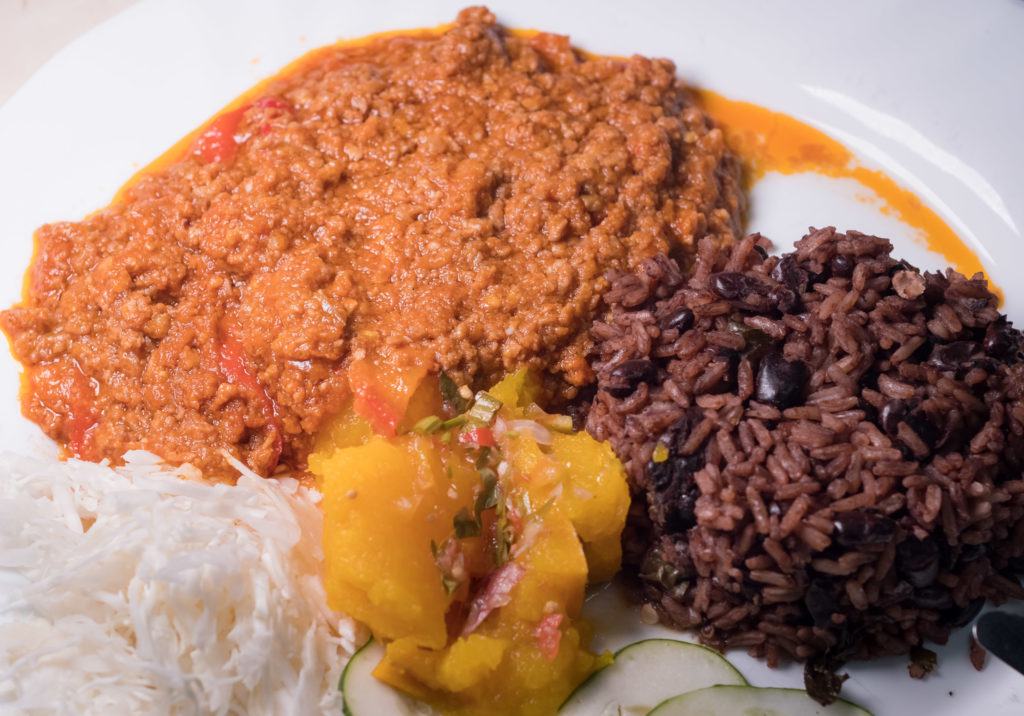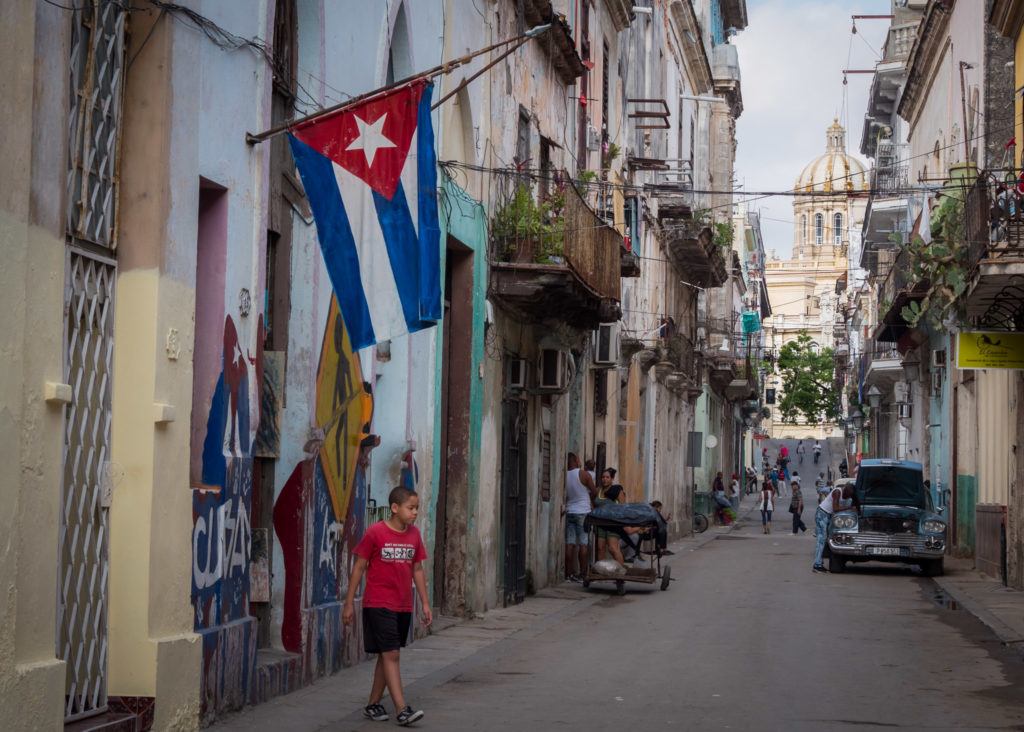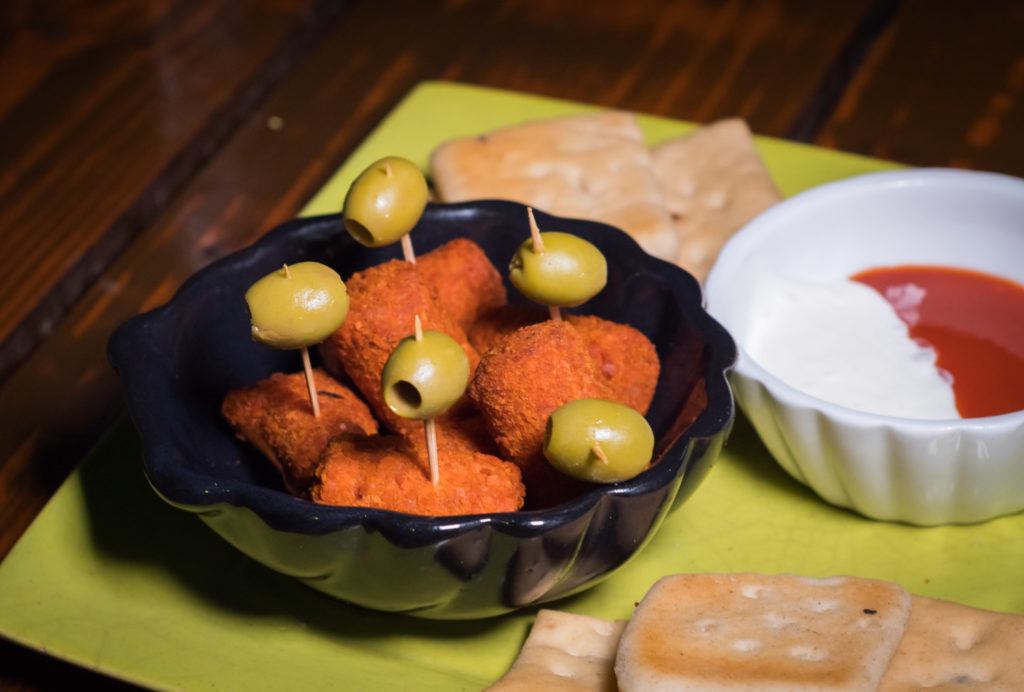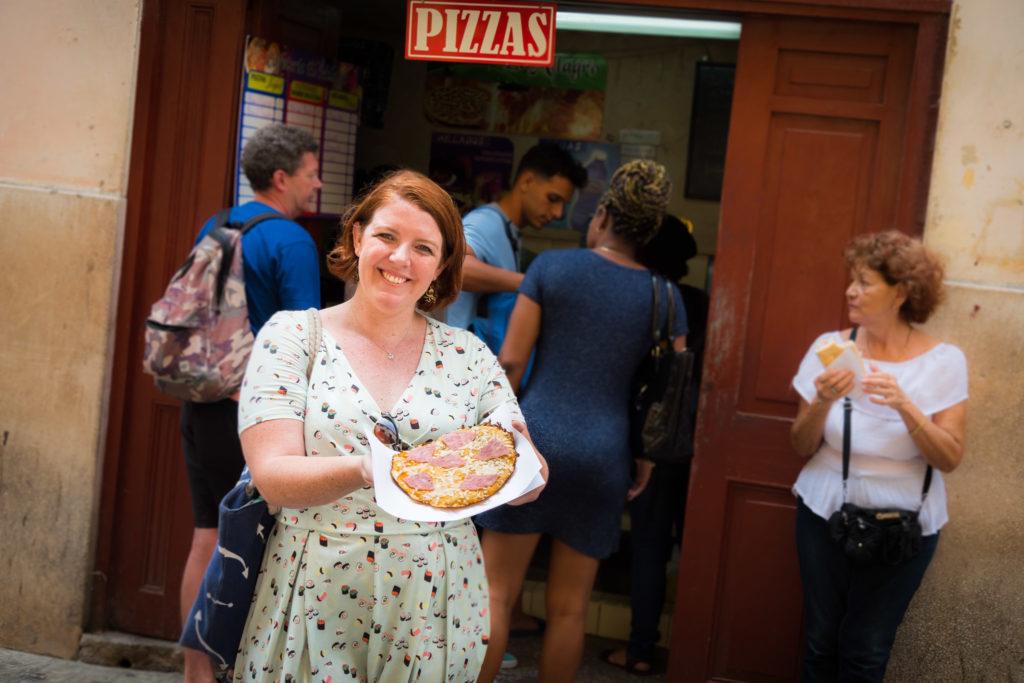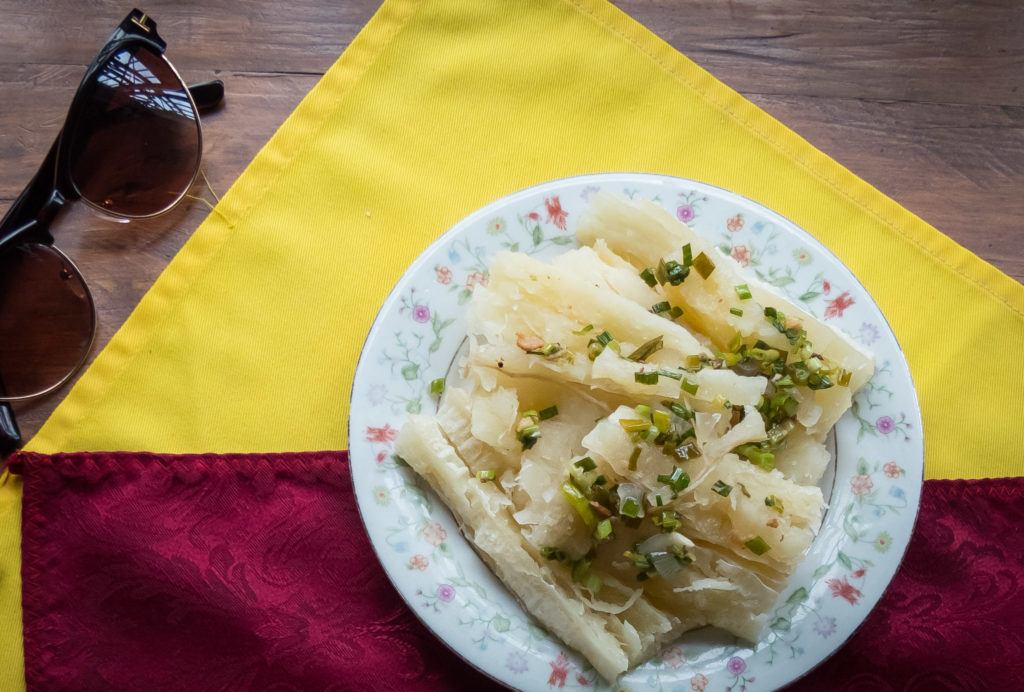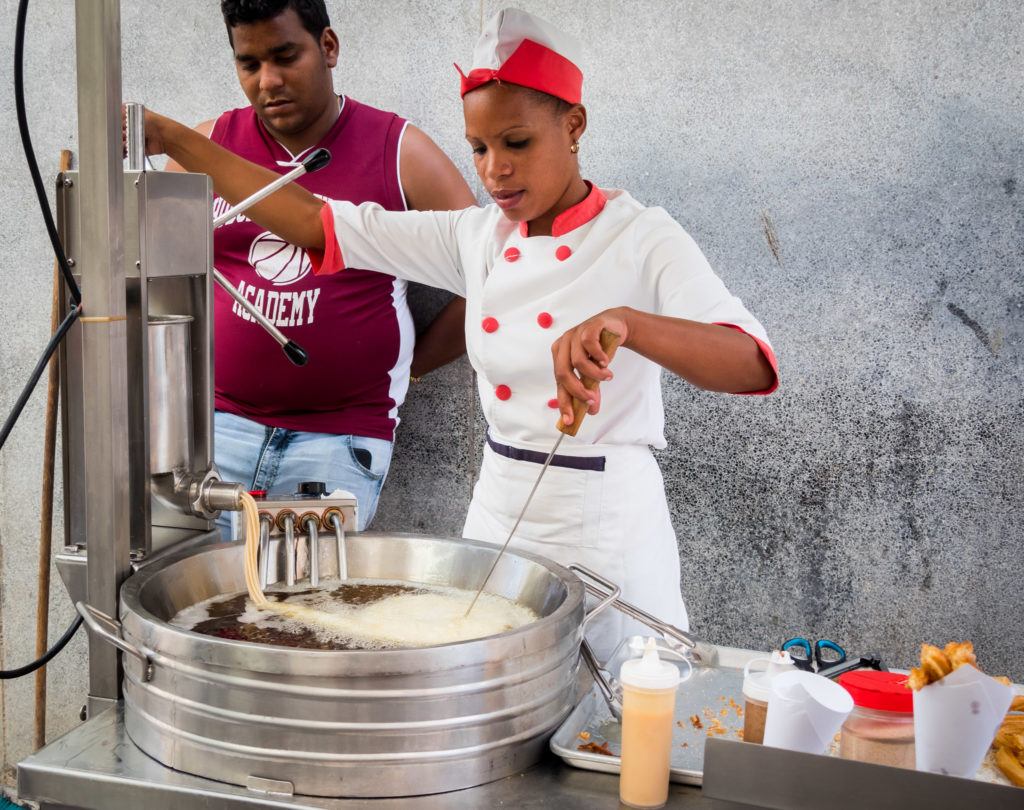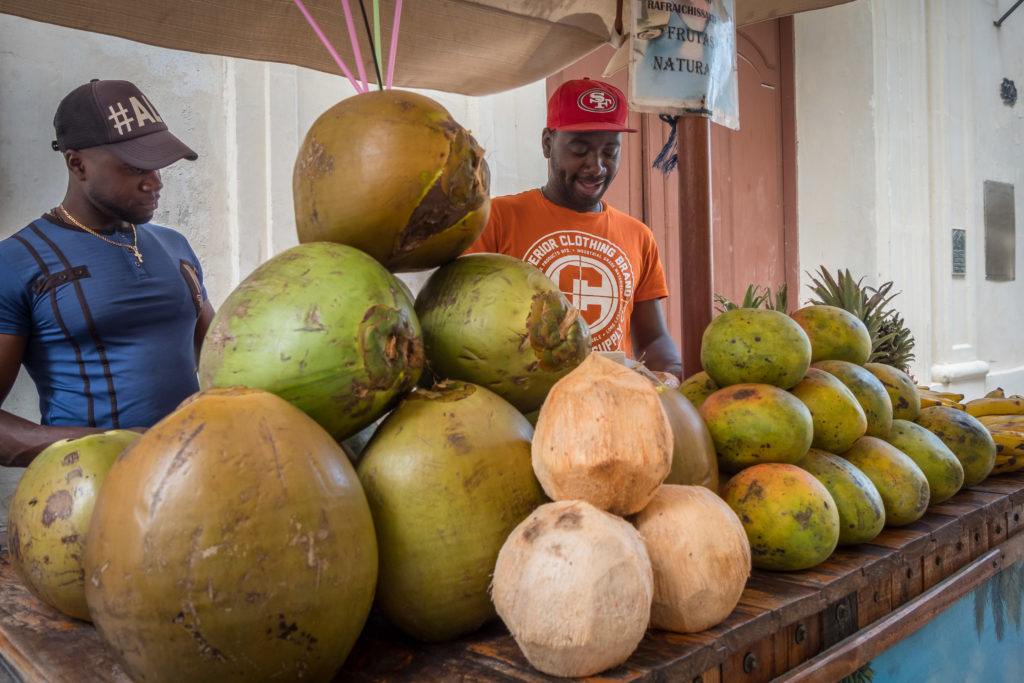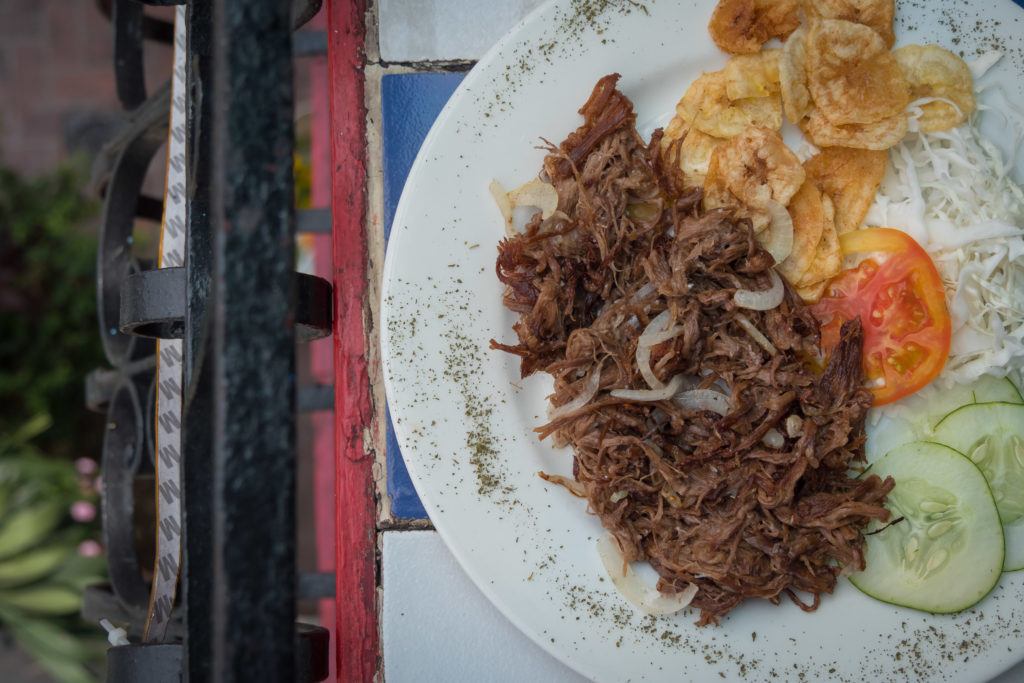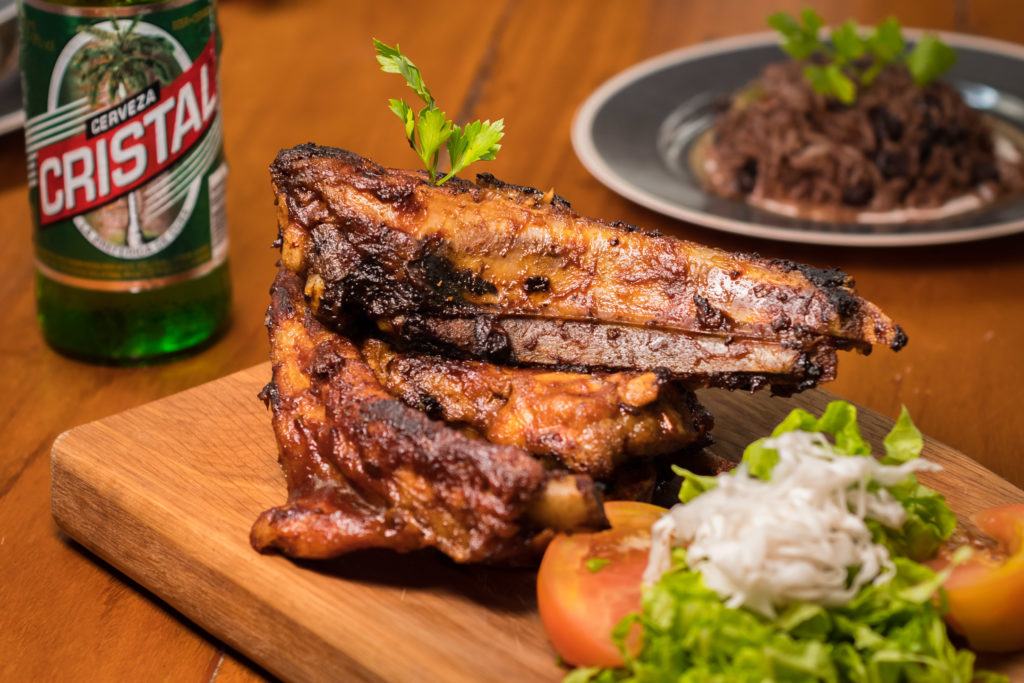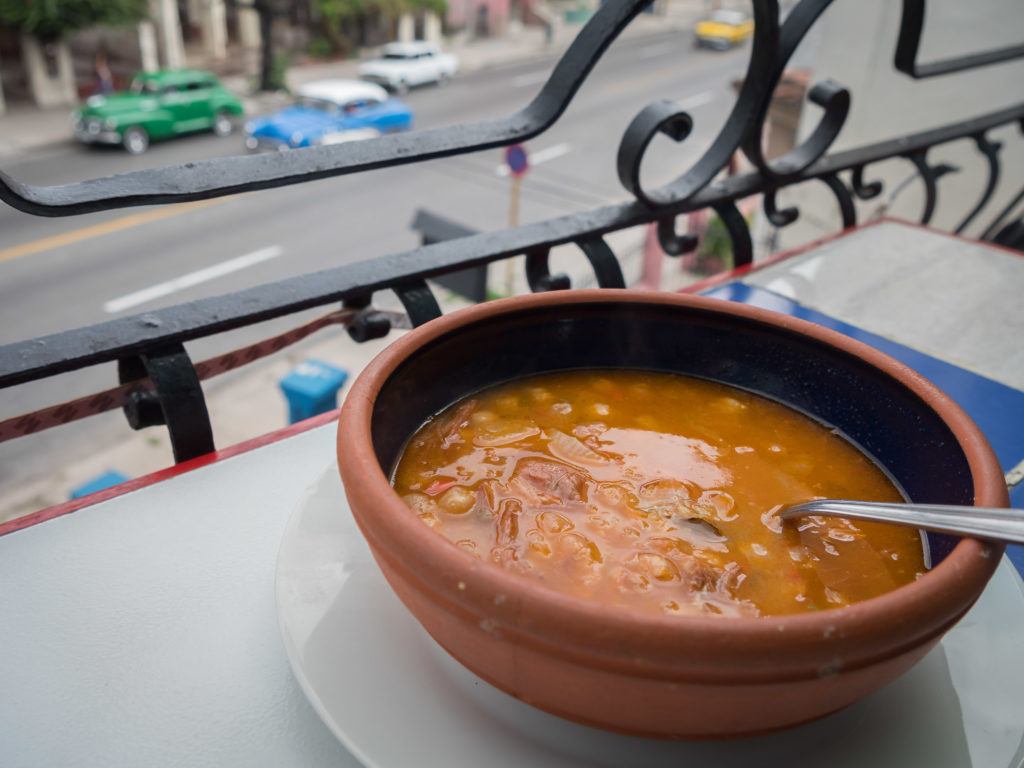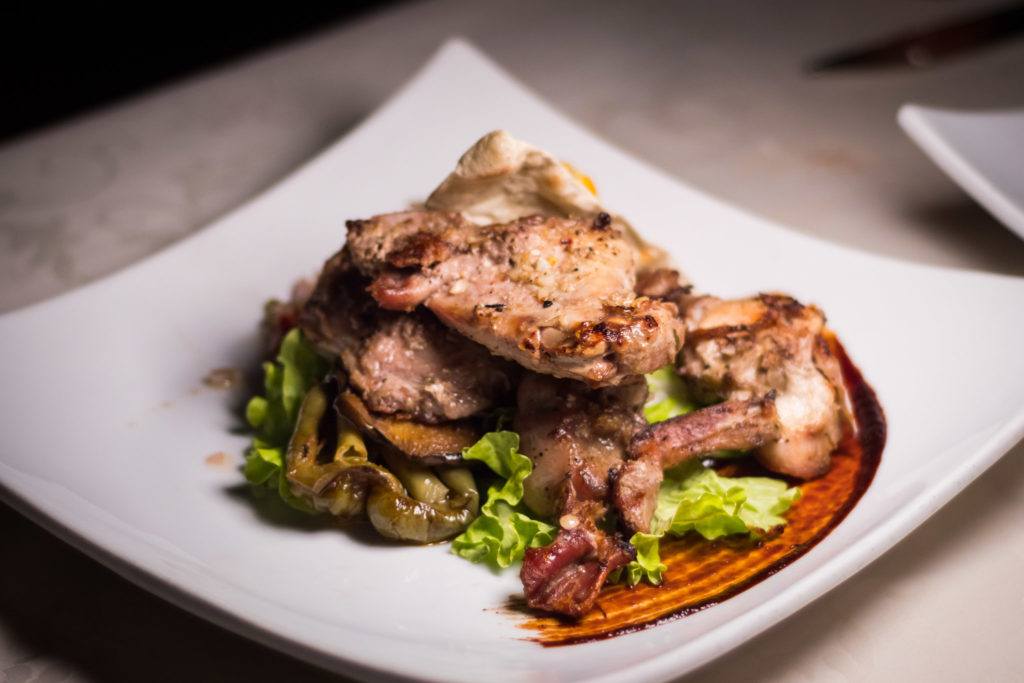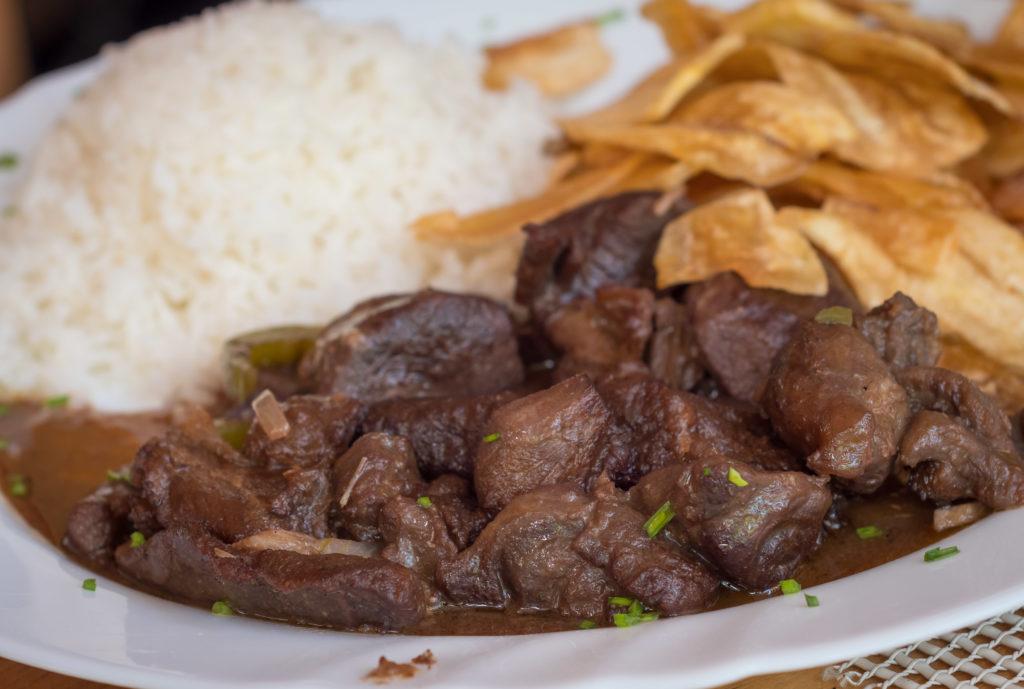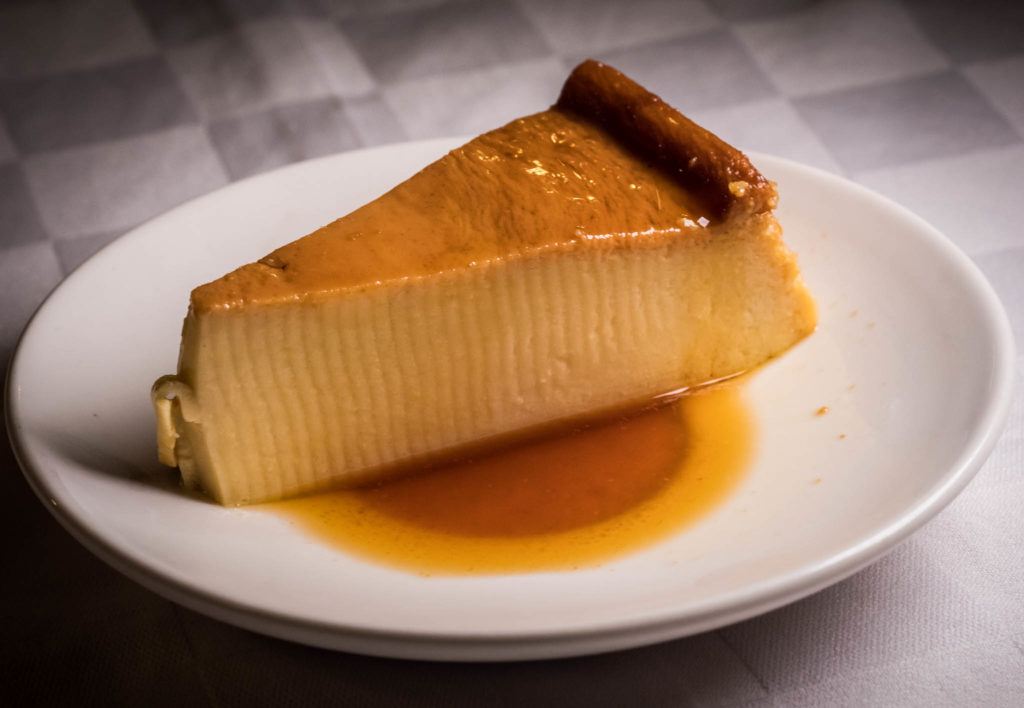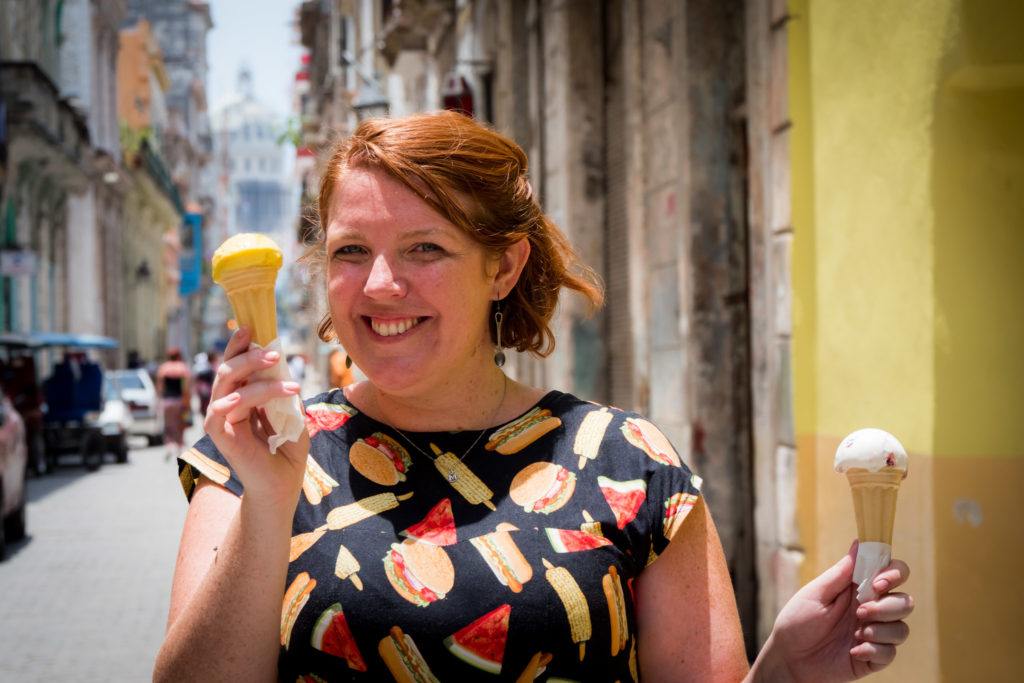Cuban Cuisine: Our mega guide explores the Cuban food history of 40+ traditional Cuban dishes including Ropa Vieja, the Cuba national dish, along with other Cuban main dishes, Cuban street food, Cuban snacks and Cuban Desserts.
When it comes to traditional Cuban food, it important to remember that Cuban-American food in the USA may mirror certain dishes that are originally from Cuba, but that there can be quite a few differences. If you are familiar with Cuban cuisine in Florida and the USA, don’t assume that the versions in Cuba are going to be the same.
Havana Food vs Florida Cuban cuisine may bring some serious surprises. Researching this article in detail uncovered some unexpected twists that may go against popular knowledge of Cuban history and cuisine too.
Here you’ll find a summary of Cuban Food History that will help you learn what to expect for a trip to Cuba, as well as giving you some tips on what to eat in Havana. So, what is Cuban food in Cuba? Let’s find out as we discover traditional Cuban food in the country of Cuba.
Cuban Food In A Nutshell: 10 Top Traditional Cuban Dishes (Must Try Cuban Food, Cuba National Dish, What to eat in Havana)
Including: Havana Food & What To Eat In Havana on a brief visit / cruise stop inc. Havana Restaurants suggestions. If you only have a day or too in Cuba, these 10 dishes should be your top priority to try.
What Is Cuban Cuisine?
Cuban cuisine is a unique fusion of Afro-Caribbean, Spanish, French & Haitian Creole as well dishes and cooking styles from Mexico and central America. Typical foods often feature tomatoes, citrus, bell peppers, cumin, oregano, seafood and more, often with a side of rice & beans or yuca.
Some of the main differences between American Cuban food (in Florida etc.) and Cuban food on the island of Cuba, is years of repression and lack of access to ingredients on the island. Dishes you may consider standard Cuban, like the cuban sandwich, are not as iconic as you’d think. However, as things have slowly improved in a few richer parts, like Havana old town, since more tourism has arrived, a little more reliability of food supply and menu choice has started appearing.
The Cuban Food Quick Top 10
Our full guide and podcast to Cuban food is below. For those who aren’t so interested in a full knowledge, and just want some tasty ideas of what to eat, this is the shortlist (Find photos further down the article):
- Ropa Vieja – The Cuban National Dish. A slow cooked, shredded beef dish mixed with a sofrito of peppers, onions and tomatoes.
- Langosta de Enchilado – Local lobster, cooked in a similar softio mix as the ropa vieja. A great combo.
- Moros y cristianos – Cuban Rice & Beans. A staple dish that has been perfected.
- Ajiaco – One of only 2 mostly pre-hispanic dishes on this list, it’s cuba’s everything stew.
- Picadillo – Cuban meat sauce. Like a spice Bolognese, sort of. With limited ingredients, this is a simple dish that can’t go too wrong.
- Street Pizza – Pan cooked pizzas. This is not NYC or Italian pizza. This is cuban pizza the dough is soft, the cheese is tangy (like sharp cheddar). It’s not fancy, but it soothed my soul seems to be cheap and available on every street corner in Havana.
- Huevos Habaneros – Eggs with whatever else is available at the time. Bell peppers, maybe some tomato and spices. A Typical breakfast dish.
- Yuca Con Mojo – Yuca is an historic pre-hispanic food of Cuba. The zesty mojo sauce takes a plain root vegetable and makes it a very tasty side or snack.
- Vaca frita – Deep fried, crispy shredded beef with crispy onions.
- Cubano (Cuban Sandwich) – Although the versions of a Cuban sandwich you’ll find in Havana bare little resemblance to a Cubano from Florida, it’s still a story to tell. It’s not a hugely popular dish like it is in Florida and certainly not the most authentic choice, or easy to find outside of the Old Havana tourist area.
Now some more detail on my top 5 picks from that list.
1. Ropa Vieja – Cuban Food History Of The Cuba National Dish
Ropa Vieja – which directly translates as “old clothes” is a dish of shredded beef slow fried in a sofrito of onions, garlic, bell peppers and tomatoes – and is considered Cuba’s national dish by many people. But like much modern Cuban cuisine, it didn’t originate in Cuba.
It’s most direct roots are from The Canary Islands – which are an island group, just off the Moroccan coast of West Africa, and owned by Spain since the 1400’s.
The Canary islands lay claim to the dish having been made there long before it became a typical Cuban food. It’s believed that the large migrations of people from the Canary Islands to Cuba in the 19th and early 20th century are the reason why the dish became a Cuban speciality.
The earliest-known documentation of ropa vieja’s presence in Cuba appeared in a cookbook from 1857, called Nuevo Manual del Cocinero Cubano y Español. So, it likely arrived in the earliest Canarian migrations.
But why is the dish called “old clothes”? The legend goes that an old man was so poor, he had nothing but his “old clothes” to shred and cook. He prayed for a miracle, and when the dish was finished, the clothes had turned into beef.
Both tomatoes and bell peppers come from the Americas. So it’s interesting that these ingredients were transported back to Europe in the 16th Century, made their way to the hot climate of the Canary Islands, where they grew perfectly, they were integrated in to the common cooking practices of Spain (like sofrito), and then with migration, were brought back to Cuba.
But, Ropa Vieja, or at least a pre-cursor to it, might have existed in Spain and the Canary Islands before the introduction of these new American ingredients. The roots of the dish, like so many great dishes, are in making use of leftovers.
The art of slow simmering meat to make stock has existed long into antiquity. In Spain, it was common to make the “Puchero”, a hearty soup, early in the day. Meat and vegetables simmering in water to create a flavorful soup. After the veg and liquid were served, the meat on the bones would eventually have broken down enough that it could then be used to make Ropa vieja.
Sofrito, also a very old cooking style, at least from Venetian times – 12th century, but probably earlier – could be combined with the meat to make another filling and tasty dish. Sofrito can be made with any vegetables, though onions and garlic are typical in almost all sofritos. Before bell peppers made it to the Canaries, carrots could substitute. Tomatoes could have been replaced with wine.
Today Ropa vieja in Cuba is normally made with flank steak – which shreds into a long and stringy consistency. But, given the lack of availability of beef in Cuba, you may find it made with pretty much whatever beef locals can get on the day.
Try Ropa Vieja @ Restaurant Van Van, Old Havana – We tried this dish all over Havana, and Van Van was our top pick.
2. Langosta de Enchilado & Langosta de Varadero – Cuban Style Lobster
Not to be confused with Mexican enchiladas! It is not connected with Mexican cuisine – there are certainly no tortillas involved!
Lobster Enchilado is a great example of Haitian Creole cooking style – and you will find the enchilado sauce used in many dishes around Cuba.
The base for Enchilado bares similarity to the Sofrito – using onions, peppers, garlic and tomatoes, but with a little more spice with the addition of things like Cumin and chilli powder – making use of what was locally available. The seafood protein is then stewed in the sauce.
The prime version of this you should try in Cuba is the Lobster Enchilado – it’s a killer combination.
For Cuban families, you can judge the importance of dinner guests by what dish is served. To get Shrimp Enchilado indicates the guests are pretty important. Lobster Enchilado is reserved for royalty.
That said, for privileged foreign tourists, you can find it in many of the more expensive tourist restaurants in Old Havana. Always ask before sitting down that they have it in that day – because menus in Cuba are just guidelines, not a list of what is actually available. Even if the tout outside a restaurant says they have lobster, check again before ordering drinks or anything else with the server, to avoid disappointment.
Langosta Varadero is a special variation of the dish hailing from the beach area of Varadero. It normally includes white rum in the recipe.
Try Langosta Enchilado @ Paladar Genesis, Old Havana is not listed on TripAdvisor or google maps – Find the approx location here
3. Moros y cristianos &/or Congri
One of the most popular Cuban dishes, rice and beans… It’s served as a side with almost every meal. For poorer households it can form the majority of their regular diet.
But rice didn’t arrive to the region until the 1520s, firstly to Mexico and quickly to other parts of the Americas. The rice and beans which appear everywhere through Central America, were certainly not a native food.
The two names you’ll see for rice and beans in Cuba are Moros y cristianos, which refers to black beans and rice. And also Congri, which commonly means red beans and rice, though in some parts of Cuba, Congri is used to refer to any beans and rice. As a dish that is present at every meal, it’s no surprise that when done well it’s a truly satisfying dish. Rich and salty.
Try @ La Algarabia, Centro Havana. Though you’ll get this typical Cuban food everywhere, the version at La Algarabia was our top pick. It’s a simple cafe with basic dishes (grilled meats with rice). If you are taking a walk into centro Havana – away from the touristy Old Havana – then it’s worth a stop. Otherwise, try beans and rice at any of the Old Havana Paladars – like Paladar Doña Eutimia (reservations normally required).
4. Ajiaco
Ajiaco is the everything stew. Whatever is available at the time gets boiled up in a pot together. It’s one of the oldest traditional Cuban dishes, existing before colonization. The name Ajiaco probably comes from the Taino word ajies meaning “a little heat”, given from the addition of local chilis. The original version would have been made with corn cobs, yuca, sweet potato, squash and other available veg, along with the catch of the day – iguana, turtle etc. This mixed with perhaps some achiote seeds and the chili.
Once the Spanish arrived, they replaced the local game meats in this dish with beef, pork, chicken etc. But they kept the local vegetables. They also started to influence the dish with the criollo cooking style – adding onion, garlic, peppers and tomato.
As an everything stew, preparations differ wildly and are based off availability of the day. Take a trip to Locos por Cuba in Centro Havana, or try this at Mojito Mojito bar in Old Havana.
5. Picadillo
Picadillo is ground meat cooked in a criollo / creole sauce. Peppers, onions, garlic and tomatoes form the base. Additions can include capers, olives, raisins, wine, vinegar – to add sweet, sour and salty elements. Picadillo is popular across Latin america and similar dishes exist all over the world – from Italian meat ragu to sloppy joes. The Cuban cuisine version is sauce heavy.
Why No Cuban Sandwich In The Top 10?
There is marked dispute as to whether the modern Cuban sandwich was actually created in Cuba – especially if it’s better to try in Cuba or Florida. It’s certainly not as easy to find a good Cuban sandwich in restaurants and cafes in Havana as you’d expect. Read more about the history of the Cuban Sandwich our full article on the history of Cuban Sandwich.
About Cuban Cuisine: What Is Cuban Food + Cuban Food History
Cuban cuisine is a combination of Native American food of the Taino people, also African and other Afro-Caribbean, a lot of Spanish, some French influence and influence from Mexico & Central America.
The earliest known Human inhabitants of Cuba were the Taino people. Archeologists believe that Cuba was inhabited via migration through Venezuela, to Trinidad, along the Antilles island chain to Puerto Rico and eventually Haiti and Cuba.
The traditional Cuban food of the Taino people involved living off the land as well as bringing knowledge of agriculture. Some of their primary crops were yuca (cassava) and sweet potato, still common in Cuban cuisine today. Their were no large animals in the Caribbean before European colonisation, and the Taino were eating things like iguanas and other lizards, rodents, earthworms and small birds – not so common in typical Cuban food in the 20th century.
Of course, seafood was abundant, and the Taino were skilled fishermen catching fish and turtles, and also collecting mussels and oysters from the local mangroves.
Also popular was corn – not ground into flour or made into tortillas, but instead grilled and eaten off the cob. Other typical fruit and veg included squash, beans, peppers, peanuts, and pineapples.
On the western tip of Cuba, lived another race of people, the Guanahatabey. There ancestry has been harder to trace, it is possible they arrived to the islands long before the Taino. Possibly even from the north, through Florida and the Bahamas – though that is just a theory. They were a simple hunter gatherer group which seemingly were slowly being replaced by the more advanced Taino people.
That’s when the Spanish arrived… In 1492, they landed on the Bahamas. Also Taino land. Eventually Columbus arrived to Cuba on his next voyage in 1493 – and he brought pigs with him from Europe. The first introduction of pork to The Americas and the start of hispanic Cuban food history.
Spanish Criollo Cooking
Spain had one of the greatest influence on Cuban Cuisine, through many waves of immigration. But also, Spain’s effect on cuisine around the region, and it’s blending with African and Caribbean on other islands, which then made it to Cuba, also led to new Cuban dishes.
The Spanish cooking methods brought to Cuba may sometimes be called Criollo cooking. Cuban Criollo refers to persons born in Cuba, who were of direct Spanish descent, rather than mixed race.
Criollo cooking makes use of Spanish cooking style, but with some local adaptations and ingredients. A diverse range of dishes hark of Criollo cooking as you’ll see in this article.
Criollo style sauce normally describes a sofrito (slowly fried) sauce with tomatoes.
Another essential Criollo sauce is Mojo. Not to be confused with Mojito, which we delve into in our Cuban Drinks Article.
Mojo sauce is a citrus garlic sauce commonly made with sour seville orange or lime, with garlic, oil, salt, pepper and perhaps with a herb, like Oregano – though the addition of oregano is less common in Cuba than in Spain.
The sauce may be used as a marinade for meat – like Pork. But another common way you may find it is added to vegetables as a finishing sauce. For example, yuca or sweet potatoes may be boiled and then topped with mojo as a simple and tastebud popping Cuban snack.
Haitian Creole
Criollo is not to be directly confused with Creole. Though the two have blended over the years and become interchangeable.
Although the words and meaning are similar, the Cuban Creole cuisine finds its roots in Haitian Creole.
Haiti is just east of Cuba. It was a French colony, and Haitian Creole culture, language and food grew out of a combination of French influence mixing with African slaves that were brought to the region.
In the 1790’s the Haitian revolution forced French colonists to flee to Cuba, along with their Creole slaves. by 1804 some 30,000 French & Creole migrants were living in Eastern Cuba. And they slowly introduced Haitian Creole cuisine into Cuba from there.
It’s characterised by the addition of spices, typically used in African cuisine, like cumin, combined with French traditional cooking methods.
More confusingly, the book A Pepper-pot of Cultures: Aspects of Creolization, describes how the word Criollo is used to identify a different type of people in every Latin American country it is used in. And that the meaning of the word has changed over time – it has even completely flipped in some common usage from the original meaning of direct Spanish descent, to now being used as slang for indigenous local people.
Hence it’s usage in cuisine has got a little mixed up too with everyone having a different opinion on what creole/criollo refer to and if they are just the same thing after many years of blending together within Cuban food history.
Paladar
Paladar means “palate” and refers to the small home style restaurants that are typically run as little independent restaurants – rather than being government run.
S2E8: Cuban Cuisine Podcast: What to eat in Havana, Cuba
In Our Cuban Cuisine Podcast:
- The Cultural History Of Cuban Cuisine
- Cuba’s National Dish… Is not the Cuban Sandwich. What is it? And why is it called “old clothes”?
- PLUS A pre-hispanic ancient Cuban dish you can still eat today…
—
ALSO: Listen To A History Of The Cuban Sandwich
And Coming April 2019: Cuban Drinks – History Of The Mojito & Daiquiri
—

Listen & Subscribe: iTunes | Spotify | Podbean | Google Play | Stitcher
RSS: https://thedish.podbean.com/feed.xml
Support: Become a Patron | Tweet: @foodfuntravel | Email: [email protected]
THE BELOW INFORMATION IS A COMPANION TO THE PODCAST – NOT A TRANSCRIPT.
Havana Accommodation:
Support local families by booking independent guesthouses, rather than corrupt government hotels. AirBnB is a good way to do this. Or use a local agent like Cuban Eden.
Or Find Hotels & Lodgings on: Booking.com | Expedia | Hotels.com | Reviews On Tripadvisor | Airbnb – get $25 off your first stay.
Is Traditional Cuban Food in Cuba Low Quality? And Why?
The brief answer is, today in 2018, there is some good food in Cuba. But quality is still very inconsistent and there are a lot of reasons for that.
Note: 1 CUC = 1 USD – though you lose about 12% in exchange taxes.
1. Produce.
The first big problem is availability of produce. Imported food is horribly overpriced (ie. a carton of fruit juice in a supermarket 3.75 CUC. A 500g (1lb) pack of simple dry spaghetti for 3.50 CUC).
Most of the population of Cuba lives off basic rations provided through a ration card system. This only includes basics like rice, beans, sugar, coffee, and 1KG of pork per month. The pricing on rationed items is similar to prices in Mexico, or a bit less (ie. 1KG (2lb) of dried beans for less than $1 USD) yet Cuban wages are much lower than Mexico. Also, once you purchase all your rations, anything else you want to buy costs a lot more.
On top of this, food shortages have been very common in Cuba. Although basic products are available most of the time, other things, like fresh fruit and veg, can be in short supply. You will often see long lines at certain stores that have just got in new products. They disappear fast and not everyone gets them in time.
So, for independent local restaurants, they may only have a fraction of the dishes listed on their menus available. The ingredients they can actually find may also be inferior quality. But the Havana Food supply seems to include more of the premium food items that you might not find elsewhere.
2. Income
The Cuban national wage is equivalent to $20 USD per month. That is the complete wage earned by all state workers. Pretty much the entire population. Most people who make more than this do so by working in the tourism sector – Classic car drivers, tour guides, waiters. A walking tour guide, Julio, who took us on a tour of Havana, makes $20 a month from his job as a University history lecturer. He makes a much more livable income as an historic tour guide.
Until recently, most restaurants were state owned and run. This means the chefs are making $20 a month to work full time. Many still are. What incentive is there to make high quality food when you will never get paid more than $20 a month? Not much.
When former president Obama made changes to certain laws, money from outside Cuba could be brought into the country and this has led to the opening of many more private restaurants where owners can charge higher prices to tourists which allow them to pay for better staff. Staff who have a reason to create quality food. Waiters who work for good tips and hence actually provide good service.
But you should also remember when you are buying your $10 burger, that most native Cubans have never been able to buy a meal like that in their lives. By being a tourist in Cuba you are unavoidably supporting the current governmental practices. But you are also providing one of the few avenues for Cubans to find an escape from poverty through private enterprise.
3. State vs. Independent
Even independent establishments have to pay taxes. So it’s impossible not to have some financial connection to the government. But if you visit state run restaurants, all the money you spend goes straight to the government and staff make the fixed $20 a month wage. We were told by locals that tips get kept by staff and not passed on to the boss. So that is the one benefit.
State run restaurant typically serve bad food. There will not be a sign telling you if a place is independent or not. But some signals to look out for:
- Greeters at the door actively trying to get you in (unlike state restaurants, the independent actually want customers)
- Refurbished – most of the independent places are new, so they’ll look better kept than the old state places.
- Independents normally have a clean and free bathroom. State places often neglect hygiene and have a bathroom attendant charging for toilet paper.
- Although you can’t guarantee great food in independent restaurants, it’s significantly more likely.
Cuban Breakfast Food
Huevos Habanero
Havana’s most popular breakfast item. Huevos Habanero means Eggs Havana Style and it combines eggs (fried or baked), with the classic creole sauce – Sofrito of tomatoes, peppers, onions, garlic, with white wine and cumin. The exact style varies from place to place.
—
Other typical Cuban breakfast food you’ll find walking around Havana is sandwiches – not specifically a Cuban sandwich but maybe ham and cheese, or other fillings. It’s not fancy, but that’s the reality of Cuba for all but the elite.
Cuban Cuisine: Cuban Street Food & Cuban Snacks / Starters / Sides
Typical Cuban Food you’ll find for snacks or as Cuban street food.
Croquettas (Croquettes)
Croquettas are deep fried potato balls, often the potato dough is mixed with ham and cheese, or a limited variety of other ingredients.
Street Pizza
For around 70 cents US, you can get a tasty Cuban pizza at any number of hole in the wall vendors.
The Cuban pizza is a fluffy medium pan base and is cooked in a frying pan – leading to a crispy sear on the bottom. The biggest surprise is the cheese, it tastes like a semi mature cheddar. Not a mild gouda, manchego or edam but a proper strong yellow cheese. It’s great!
The corner pizza places appear every few streets and along with fresh made dough, and consistently the same type of cheese – We assume a “standard” communist cheese that is the same everywhere around Havana and elsewhere – you can also get some ham, chorizo, olives and other toppings, depending on what they have that day.
Cuban Empanadas
The word empanada comes from the Spanish word empanar – which simply means to wrap in bread. With the usual produce availability issues, Cuban empanadas in Cuba can end up being as unusual as using yesterday’s sandwich bread and deep frying it with some ham and cheese inside.
More typically, a bread dough filled with picadillo (Slow cooked ground beef) or perhaps an Empanada Gallega: Stuffed with well-seasoned chicken and veggies, is deep fried.
Yuca Con Mojo / Boniato Con Mojo – What is “Mojo”
Turn boring boiled yuca into a fun snack by drizzling it with mojo sauce.
Churros
The famous deep fried, crispy dough, like many of the dishes here, didn’t originate in Cuba. In fact, it didn’t originate in Latin America at all. But like everywhere else in the Americas, churros are a decadent street food that may be either Spanish or Portuguese in origin, and you’ll see them being sold on a few street corners around Havana.
MediaNoche – Midnight Sandwich
With roast pork, ham, Swiss cheese, and pickles, this is almost identical to a Cuban sandwich, save for the bread, a sweeter eggy bread.
It’s named the midnight sandwich because it’s common to find it as a post-drinking Cuban street food to be eaten after midnight. Our search for this in Havana failed, and the one we tried bared no resemblance to the tasty description.
Fresh Fruits
Carts selling fresh fruit may be seen on street corners. Pineapples, bananas, mangos and whatever else is in season. With Cuba being the ideal climate for year round fruit production, plus so many import restrictions, fruit from these carts will always be locally grown.
Maduros – fried sweet plantains
Sweet, ripe plantains are deep fried producing a soft on the inside, slightly crisped on the outside little pop of sweet & salty goodness. Often served along with beans and rice, with meat dishes.
Tostones & Tostones Rollos
Tostones are twice fried green (unripe) plantains. Fried to go crispy like thick chips. A cheap Cuban snack.
Tostones rollos (Sometimes tostones rellenos) are green plantains, or little green plantain dough cups, stuffed with something like shredded or ground beef, or any leftovers available.
FuFu
Fufu is the mashed potato style version of plantains. Sometimes made with a mix of mashed green & sweet plantains – or just with medium ripened plantains. Often mixed with garlic and citrus.
Tamales
Tamales are a traditional meso-American food – existing before the Europeans arrived. They all have the common process of massa dough (made from corn) being wrapped around a filling to make a sort of starchy stuffed tube that is then traditionally cooked inside a corn husk. The main regional difference is the filling, which in Cuba is normally pork, and sometimes with niblets of corn.
Casabe – Yuca Bread
A simple bread made from yuca.
Cuban Cuisine: Other Cuban Main Dishes (Inc. Cuban Fish Dishes, Stews & Soups)
Cuban Sandwich (La Cubano)
When you think of a cuban sandwich you likely imagine juicy pork, melty cheese and pickles. But the most famous Cuban sandwich that we think of today was not invented in Cuba. The original Cuban sandwich from Cuba was a working class pork sandwich, for sure, but a much simpler affair than the Florida masterpieces we love today.
The Cuban sandwich you’ll find in local restaurants in Havana will normally lack the extra ingredients, like pickles, unless you head to the most touristy restaurants where they are re-creating the Florida style Cubano as they know Americans who visit want to believe they ate a true Cubano in Cuba during their brief cruise ship visit.
We delve into the real history of the Cubano in our history of Cuban Sandwich article and podcast.
Vaca frita
The cousin to Ropa Vieja, likely also influenced by the arrival of immigrants from the Canary Islands. Here the slow cooked beef is then shredded and re-fried with onions and garlic to be a drier dish, rather than in sauce.
Fricasé de Pollo
Chicken Fricasé – This cooking style originates from France (called fricassee). It involves cooking the meat and veg in a style half way between saute (where no liquid is added) and stew (where lots of liquid is added) so it’s like a wet saute. The Cuban version uses many of the classic creole ingredients – onions, peppers, tomato, olives, capers, raisins – depending on the chef.
Arroz con Pollo / Cuban Paella
Cuba’s version of Spanish Paella. A one pot rice dish, slow simmered with chicken and cumin – sometimes saffron, if available.
Meat in Criollo
The typical criollo that is added to shredded beef to make ropa vieja, is also found as the base sauce for many different meat dishes. Pork, chicken or whatever the chef has in the kitchen. The Criollo sauce makes everything taste better!
Masas Fritas / Masas De Cerdo
Pork chunks pan fried with onions – typically with garlic and white wine.
Costillitas & Costillas
Pork ribs (costillas) / baby back ribs (costillitas) which are marinated and served with a mix of sour orange juice, lime juice, oregano, garlic, and olive oil. They taste sweet and tangy at the same time and are simply delicious.
Quimbombó
A dish strongly reflecting African influence in Cuba. Quimbombó refers to okra, and also to an Afro-Cuban stew made with okra. Garlic, onion and ham or pork broth is used to flavor the dish.
Cocido de garbanzos
A hearty soup originating from Spain or Portugal made with chickpeas, meat and vegetables and often served as a whole meal rather than just as the soup course.
Lechon Asado
Whole roasted pig with very crispy skin. Found all over the world but certainly a favourite in Cuba – the first country in Latin America to have pigs introduced by the Europeans – in 1493 by Columbus.
Zarzuela Caribeña
A zarzuela refers to a lyrical theatre style with both sung and spoken scenes along with dance, it dates back to 16th century Spain. By the end of the 19th century the style had become a part of Cuban culture with Cuban zarzuelas being held across the island.
The is Zarzuela comes originally from Catalan. It refers to a completely over the top seafood stew that uses a myriad of different seafood – lobster tails, fish, scallops, clams, mussels, prawns. Like the theatre of the zarazuela, this dish is a complex symphony of many different things.
The Zarzuela Caribeña is simply an interpretation of the dish focusing on local Cuban seafood options.
Cheese Soup (Sopa de Crema de Queso)
Chicken stock and garlic meets cream and cheese in the filling, rich soup.
Sopon Del Puerto
A soup that is said to originate from the Cuban town of Camagüey. Made with Salt Beef/beef jerky and smoked pork along with a selection of vegetable. It should always be a spicy soup made with chili pepper.
Pulpeta – Cuban Meatloaf
Meatloaf normally seasoned with paprika and oregano and featuring boiled eggs through the center of the loaf.
Lomo Ahumado (Chuletta Cuban Style)
Smoked then grilled pork chop. Sometimes seen served topped with pineapple and melted cheese. Known as Chuletta in the Yucatan, Mexico, but typically called Lomo Ahumado throughout Cuba.
Rabo Encendido – Oxtail Stew
Rabo Encendido means “tail on fire” which could refer to the bright red color of this oxtail stew. The color comes of course from tomato, but with greater intensity due to the common addition of annatto (achiote). The stew also contains all the usual sofrito/criollo ingredients.
Grilled Rabbit & Rabbit Stew (Conejo estofado a la cubana)
Rabbit is a protein you will occasionally find on the menu. As well as Conejo Asado (grilled rabbit, pictured), you may also find rabbit slow stewed (estafado) in wine, tomatoes etc. and even with some rum added to the mix.
We ate Conejo Asado at Restaurant Ivan Chef Gusto – the restaurant of Fidel Castro’s former personal chef. Learn about our experience at this slightly controversial restaurant in our full podcast episode above.
Empanizado
Breaded and fried meat cutlet. Another popular item across Cuba that is also found all over the world.
Cordero Al Vino Tinto – Lamb In Red Wine
Meat stewed in red wine (vino tinto). Another European classic to be found on many a Cuban menu. Lamb (cordero) is rare in Cuba. We ate this at La Catedral in a richer suburb of Havana – Vedado. You may more commonly find other meats stewed in red wine – like beef, sometimes rabbit.
Havana Accommodation:
Support local families by booking independent guesthouses, rather than corrupt government hotels. AirBnB is a good way to do this. Or use a local agent like Cuban Eden.
Or Find Hotels & Lodgings on: Booking.com | Expedia | Hotels.com | Reviews On Tripadvisor | Airbnb – get $25 off your first stay.
Cuban Cuisine: Cuban Desserts
There aren’t a huge number of Cuban Desserts and certainly few which seem to scream “Cuban” rather than just Latin American. But here are some Cuban desserts to look out for in Cuba.
Flan
The Cuban dessert version of flan should use a mix of evaporated and condensed milk from cans, rather than fresh milk. This makes for a denser, creamier flan. Vanila is the hardest ingredient for Cubans to find, so Flan in Cuba may sometimes lack vanilla.
Dulce de Leche
A typical cheap Cuban dessert, dulce de leche is sweet caramel milk curds made from lots of milk, eggs and sugar. Lemon is added to milk and left to curdle for a few days. The curds, eggs and sugar are then scrambled in a pan.
Helado – Local Ice Cream
Although ice cream is everywhere around the world, we were surprised to learn that it is a little more of a luxury Cuban Dessert. Meaning, it is a special treat for Cubans to get ice cream and it has not been widely available in the past.
We discovered some great, locally made ice cream – which also used local fruits – when we took a Havana food tour with Food Tours Havana.

Lonely Planet Havana & Cuba Guide
Get the full Lonely Planet Cuba guide – including Havana sections – as a physical or e-book.
You can get the full book, or just download the chapters you need.
Stay informed as you travel, even without internet access.
Grab your copy of the Lonely Planet Cuba guide.
That’s it for our Cuban Cuisine guide! Cuban Desserts, Cuban Snacks & The history of Cuban Food.
Already Been To Havana? What was your favorite Traditional Cuban Food? Leave us a comment on twitter @foodfuntravel
Love this post? Why Not Pin it?
 |
 |
 |

